This list includes 94 Mammals that start with L, from “Amur Leopard” to “Spotted Linsang”. It covers widespread and regionally rare species and serves students, educators, and wildlife writers.
Mammals that start with L are species in Class Mammalia whose common English names begin with the letter L. Many, like the Amur Leopard, carry cultural or conservation significance and appear in regional folklore.
Below you’ll find the table with Common name, Scientific name, Order, and Habitat.
Common name: Shows the everyday English name you will recognize, helping you locate species quickly in text and lists.
Scientific name: Gives the accepted Latin binomial so you can confirm species identity across languages and databases.
Order: Notes the taxonomic order to show broader relationships and help you group similar species.
Habitat: Brief standardized habitat descriptions let you quickly understand where each species commonly lives and forages.
Taxonomy follows widely accepted classifications and recent revisions where applicable.
This list excludes species known only from fossils and focuses on extant or recently extirpated mammals.
Last updated: October 29, 2025.
Mammals that start with L
| Common name | Scientific name | Order | Habitat |
|---|---|---|---|
| Lion | Panthera leo | Carnivora | Grassland |
| Leopard | Panthera pardus | Carnivora | Forest |
| Llama | Lama glama | Artiodactyla | Montane |
| Ring-tailed Lemur | Lemur catta | Primates | Forest |
| Leopard Seal | Hydrurga leptonyx | Carnivora | Marine |
| Canada Lynx | Lynx canadensis | Carnivora | Forest |
| Iberian Lynx | Lynx pardinus | Carnivora | Forest |
| Eurasian Lynx | Lynx lynx | Carnivora | Forest |
| Lar Gibbon | Hylobates lar | Primates | Forest |
| Lion-tailed Macaque | Macaca silenus | Primates | Forest |
| Long-finned Pilot Whale | Globicephala melas | Cetacea | Marine |
| Long-beaked Common Dolphin | Delphinus capensis | Cetacea | Marine |
| Long-beaked Echidna | Zaglossus bruijnii | Monotremata | Forest |
| Least Weasel | Mustela nivalis | Carnivora | Grassland |
| Laotian Rock Rat | Laonastes aenigmamus | Rodentia | Montane |
| Lechwe | Kobus leche | Artiodactyla | Freshwater |
| Leisler’s Bat | Nyctalus leisleri | Chiroptera | Forest |
| Lesser Kudu | Tragelaphus imberbis | Artiodactyla | Grassland |
| Lesser Hedgehog Tenrec | Echinops telfairi | Afrosoricida | Forest |
| Lesser Long-nosed Bat | Leptonycteris yerbabuenae | Chiroptera | Desert |
| Lesser Mouse-deer | Tragulus kanchil | Artiodactyla | Forest |
| L‘Hoest’s Monkey | Allochrocebus lhoesti | Primates | Forest |
| Linnaeus’s Two-toed Sloth | Choloepus didactylus | Pilosa | Forest |
| Little Brown Bat | Myotis lucifugus | Chiroptera | Forest |
| Little Red Flying-fox | Pteropus scapulatus | Chiroptera | Forest |
| Livingstone’s Flying Fox | Pteropus livingstonii | Chiroptera | Forest |
| Long-eared Hedgehog | Hemiechinus auritus | Eulipotyphla | Desert |
| Lord Howe Long-eared Bat | Nyctophilus howensis | Chiroptera | Forest |
| Lowland Anoa | Bubalus depressicornis | Artiodactyla | Forest |
| Lowland Paca | Cuniculus paca | Rodentia | Forest |
| Luzon Striped Rat | Chrotomys whiteheadi | Rodentia | Montane |
| Amur Leopard | Panthera pardus orientalis | Carnivora | Forest |
| Asiatic Lion | Panthera leo leo | Carnivora | Forest |
| Gray Langur | Semnopithecus entellus | Primates | Forest |
| Golden Langur | Trachypithecus geei | Primates | Forest |
| Spotted Linsang | Prionodon pardicolor | Carnivora | Forest |
| Banded Linsang | Prionodon linsang | Carnivora | Forest |
| Pygmy Slow Loris | Xanthonycticebus pygmaeus | Primates | Forest |
| Bengal Slow Loris | Nycticebus bengalensis | Primates | Forest |
| Gray Slender Loris | Loris lydekkerianus | Primates | Forest |
| Norway Lemming | Lemmus lemmus | Rodentia | Tundra |
| Northern Bog Lemming | Synaptomys borealis | Rodentia | Tundra |
| Leopard Cat | Prionailurus bengalensis | Carnivora | Forest |
| Leadbeater’s Possum | Gymnobelideus leadbeateri | Diprotodontia | Forest |
| Liberian Mongoose | Liberiictis kuhni | Carnivora | Forest |
| Lichtenstein’s Hartebeest | Alcelaphus lichtensteinii | Artiodactyla | Grassland |
| Large-eared Pika | Ochotona macrotis | Lagomorpha | Montane |
| Long-tailed Weasel | Neogale frenata | Carnivora | Grassland |
| Large-footed Myotis | Myotis macropus | Chiroptera | Freshwater |
| Long-nosed Bandicoot | Perameles nasuta | Peramelemorphia | Forest |
| Long-nosed Potoroo | Potorous tridactylus | Diprotodontia | Forest |
| Long-tailed Chinchilla | Chinchilla lanigera | Rodentia | Montane |
| Long-tailed Pangolin | Phataginus tetradactyla | Pholidota | Forest |
| Lowland Red Brocket | Mazama americana | Artiodactyla | Forest |
| Lesser Grison | Galictis cuja | Carnivora | Grassland |
| Lesser Mole-rat | Nannospalax leucodon | Rodentia | Subterranean |
| Lesser Shrew | Sorex minutus | Eulipotyphla | Forest |
| Lesser Bamboo Lemur | Hapalemur griseus | Primates | Forest |
| Lowe’s Monkey | Cercopithecus lowei | Primates | Forest |
| Long-haired Rat | Rattus villosissimus | Rodentia | Desert |
| Long-tailed Dunnart | Sminthopsis longicaudata | Dasyuromorpha | Desert |
| Long-tailed Marmot | Marmota caudata | Rodentia | Montane |
| Long-tongued Nectar Bat | Macroglossus minimus | Chiroptera | Forest |
| Leopardus guttulus | Leopardus guttulus | Carnivora | Forest |
| Leaf-chinned Bat | Mormoops megalophylla | Chiroptera | Subterranean |
| Lapland Reindeer | Rangifer tarandus tarandus | Artiodactyla | Tundra |
| Lesser Capybara | Hydrochoerus isthmius | Rodentia | Freshwater |
| Lesser Dog-like Bat | Peropteryx macrotis | Chiroptera | Forest |
| Lesser Yellow Bat | Scotophilus borbonicus | Chiroptera | Urban |
| Lesser Woolly Horseshoe Bat | Rhinolophus beddomei | Chiroptera | Subterranean |
| Lewis’s Marmot | Marmota lewisi | Rodentia | Montane |
| Lord Derby’s Anomalure | Anomalurus derbianus | Rodentia | Forest |
| Lyle’s Flying Fox | Pteropus lylei | Chiroptera | Urban |
| Luzon Broad-toothed Rat | Abditomys latidens | Rodentia | Forest |
| Lesser Ghost Bat | Diclidurus scutatus | Chiroptera | Forest |
| Lesser Gymnure | Hylomys suillus | Eulipotyphla | Forest |
| Lesser Treeshrew | Tupaia minor | Scandentia | Forest |
| Large-eared Tenrec | Geogale aurita | Afrosoricida | Forest |
| Large Forest Bat | Vespadelus darlingtoni | Chiroptera | Forest |
| Large-eared Flying Fox | Pteropus macrotis | Chiroptera | Forest |
| Lombock Flying Fox | Pteropus lombocensis | Chiroptera | Forest |
| Little Forest Bat | Vespadelus vulturnus | Chiroptera | Forest |
| Long-crested Pygmy Porcupine | Coendou prehensilis | Rodentia | Forest |
| Long-eared Chipmunk | Neotamias quadrimaculatus | Rodentia | Forest |
| Little Pied Bat | Chalinolobus picatus | Chiroptera | Grassland |
| Long-glanded Mole-shrew | Anourosorex schmidi | Eulipotyphla | Forest |
| Long-tailed Vole | Microtus longicaudus | Rodentia | Montane |
| Lowland Brush Mouse | Peromyscus yucatanicus | Rodentia | Forest |
| Lesser Stick-nest Rat | Leporillus apicalis | Rodentia | Desert |
| Long-tailed Planigale | Planigale ingrami | Dasyuromorpha | Grassland |
| Lesser Bilby | Macrotis leucura | Peramelemorphia | Desert |
| Large Rock Rat | Zyzomys maini | Rodentia | Montane |
| Long-tailed hopping mouse | Notomys longicaudatus | Rodentia | Desert |
| Liverpool Bay/Halifax Bay Thing | Balaenoptera sp. | Cetacea | Marine |
Descriptions

Lion
This large cat, native to Africa and India, is the most social feline, living in groups called prides. Males are distinguished by their impressive manes. The species is listed as Vulnerable due to population decline.
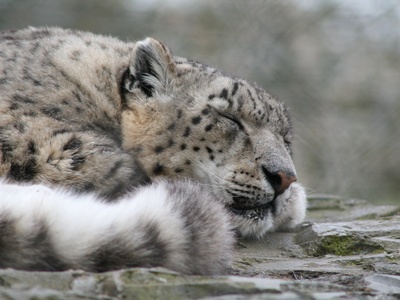
Leopard
A famously adaptable large cat of Africa and Asia, known for its rosette-patterned coat. It is a powerful, solitary hunter that often hauls its prey up trees to keep it safe from scavengers.

Llama
A domesticated South American camelid, used for centuries in the Andes as a pack animal. Known for its calm demeanor, it communicates with a series of ear, body, and tail postures and may spit when agitated.

Ring-tailed Lemur
An iconic primate from Madagascar, easily recognized by its long, black-and-white banded tail. Highly social, it spends significant time on the ground and uses its tail for signaling and balance.

Leopard Seal
A formidable apex predator of the Antarctic, known for its large size and powerful jaws. It preys on a variety of animals, including penguins, fish, and other seals, and has a distinctive, slender body.
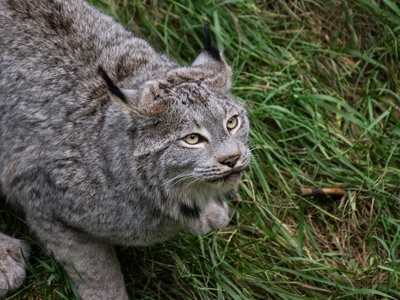
Canada Lynx
A wild cat of North American boreal forests, perfectly adapted for snowy environments with its large, furry paws acting as snowshoes. It is a specialist predator, primarily hunting snowshoe hares.

Iberian Lynx
The world’s most endangered feline species, native to the Iberian Peninsula. Conservation efforts have brought it back from the brink of extinction. It is a specialist rabbit hunter.
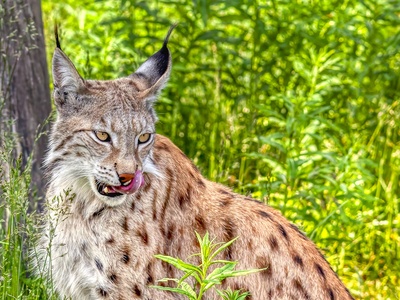
Eurasian Lynx
A medium-sized wild cat found across Europe and Asia. It is a reclusive forest-dweller with characteristic tufted ears and a short tail, preying on deer, foxes, and other medium-sized mammals.
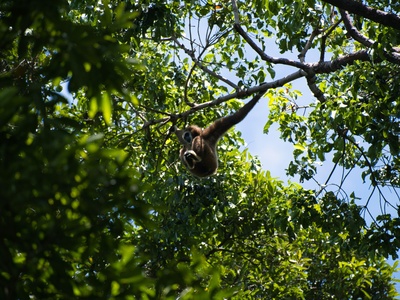
Lar Gibbon
Also known as the White-handed Gibbon, this primate from Southeast Asia is famous for its acrobatic movements through the trees (brachiation). It uses its long arms to swing gracefully between branches.
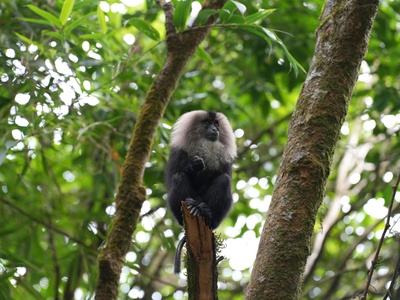
Lion-tailed Macaque
A primate from the Western Ghats of South India, named for its long tail that ends in a black tuft, like a lion’s. It has a striking silver-white mane and is one of the world’s rarest macaques.

Long-finned Pilot Whale
A large species of oceanic dolphin with a bulbous head and long pectoral fins. They are highly social, living in tight-knit family pods, and are known for mass strandings.

Long-beaked Common Dolphin
A highly energetic and acrobatic dolphin found in warm coastal waters worldwide. They are known for riding the bow waves of boats and can form super-pods of thousands of individuals.
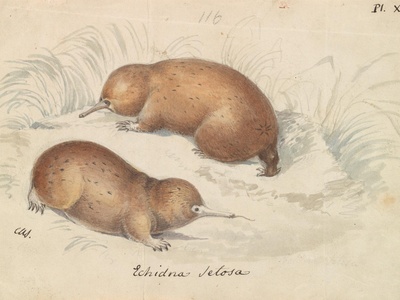
Long-beaked Echidna
One of the world’s few egg-laying mammals, found in New Guinea. It has a long, downward-curving snout used to probe for earthworms and is covered in coarse hair and spines. Critically Endangered.
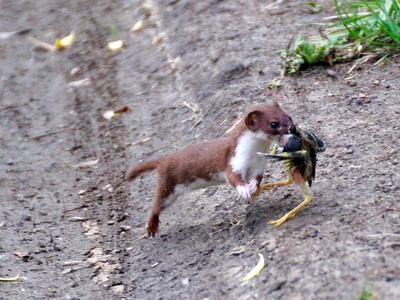
Least Weasel
The smallest carnivoran in the world, this tiny but fierce predator hunts mice and voles in tunnels under the snow. It has a slender body and can change its coat from brown to white in winter.
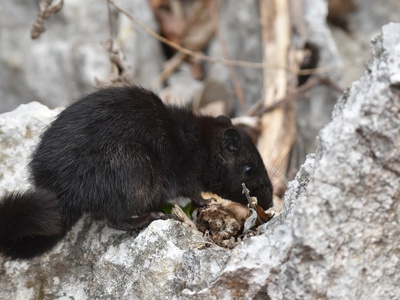
Laotian Rock Rat
A rodent from Laos once thought to be extinct for 11 million years, making it a “living fossil”. It has a dark, bushy tail and a unique skull structure, representing a sole surviving lineage.
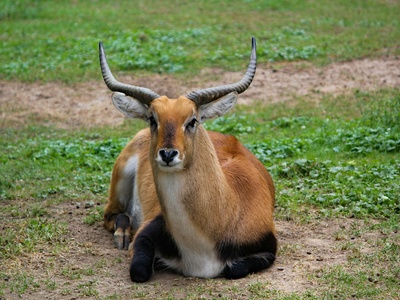
Lechwe
A semi-aquatic antelope from the floodplains of south-central Africa. Its long, splayed hooves are adapted for walking on marshy ground, and it often feeds while wading in water.
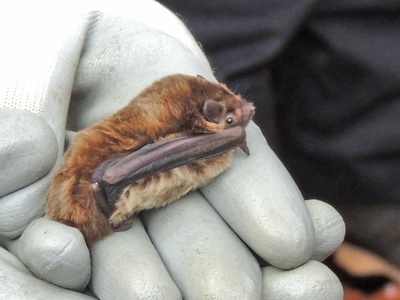
Leisler’s Bat
A medium-sized bat found across Europe and parts of Asia. It is a fast-flying aerial insectivore that roosts in trees and is known to undertake long-distance migrations between summer and winter sites.
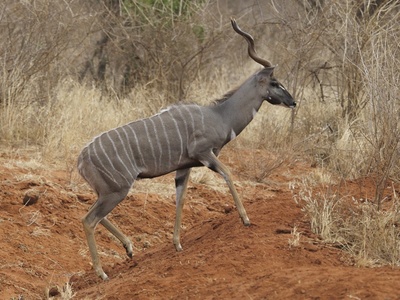
Lesser Kudu
A graceful, spiral-horned antelope from the dry bushlands of East Africa. It is more elusive and smaller than its relative, the Greater Kudu, with distinctive white stripes on its greyish-brown coat.
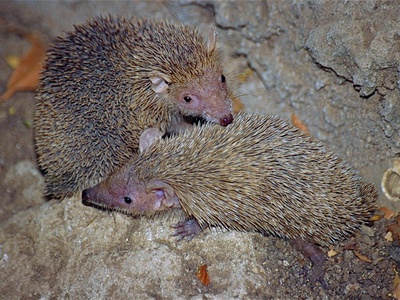
Lesser Hedgehog Tenrec
A small, spiny mammal from Madagascar that resembles a hedgehog but is unrelated. It is nocturnal, feeding on insects, and can enter a state of torpor to conserve energy.

Lesser Long-nosed Bat
A crucial pollinator in the deserts of Mexico and the southwestern U.S. This bat feeds on the nectar of agave and cactus flowers, playing a key role in the survival of these plants.
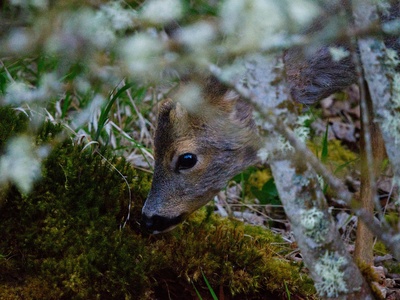
Lesser Mouse-deer
One of the world’s smallest hoofed animals, found in Southeast Asia. This tiny, deer-like creature is shy and solitary, navigating the forest floor on pencil-thin legs.
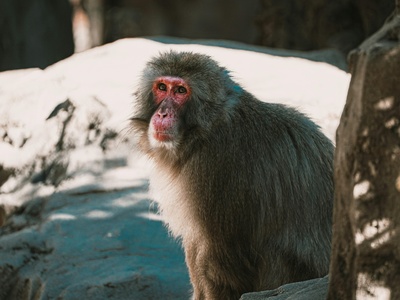
L‘Hoest’s Monkey
A forest monkey from the Albertine Rift of central Africa. It has a dark coat with a characteristic white bib and lives in small, female-dominated groups with a single male.
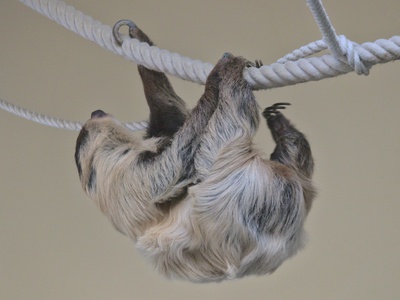
Linnaeus’s Two-toed Sloth
A slow-moving arboreal mammal from the rainforests of South America. It spends most of its life hanging upside down from trees, with a specialized metabolism that allows for a low-energy lifestyle.
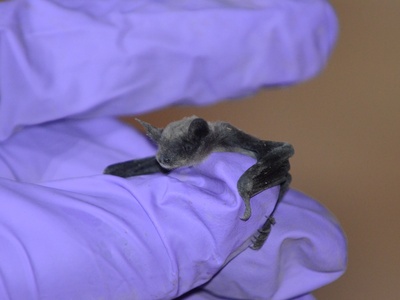
Little Brown Bat
Once one of the most common bats in North America, its populations have been decimated by white-nose syndrome. It is a small insectivore that hibernates in caves during winter.

Little Red Flying-fox
A nomadic fruit bat from Australia that forms massive, noisy camps that can number in the hundreds of thousands. They are important pollinators and seed dispersers for native trees.

Livingstone’s Flying Fox
One of the largest and rarest bats in the world, found only on two islands in the Comoros. With a wingspan over four feet, this fruit bat is critically endangered due to habitat loss.

Long-eared Hedgehog
A small hedgehog from Central Asia and the Middle East, distinguished by its unusually long ears that help dissipate heat. It is a nocturnal insectivore well-adapted to arid environments.
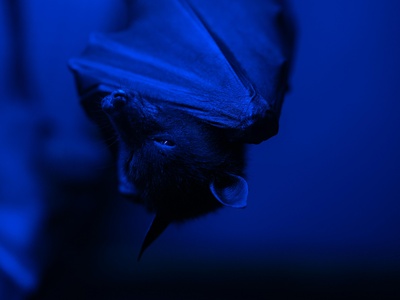
Lord Howe Long-eared Bat
A critically endangered, possibly extinct, bat from Lord Howe Island, Australia. It has not been definitively seen since 1972 and is known from a single skull.
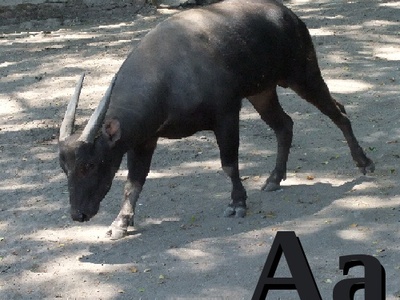
Lowland Anoa
The world’s smallest wild cattle species, native to the island of Sulawesi, Indonesia. This miniature “water buffalo” is a shy, solitary forest dweller and is highly endangered.

Lowland Paca
A large rodent from Central and South America. Nocturnal and typically solitary, it has rows of white spots on its coat and is an excellent swimmer, often diving into water to escape predators.
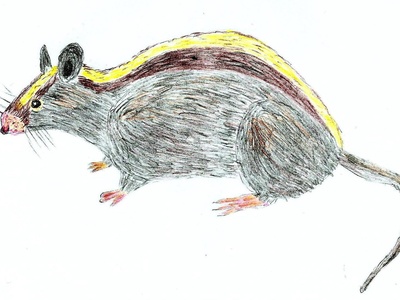
Luzon Striped Rat
A unique rodent from the mountains of Luzon, Philippines. Resembling a shrew, it has a long snout and small eyes, and unusually for a rodent, it feeds almost exclusively on earthworms.
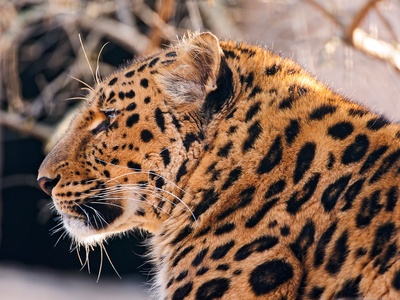
Amur Leopard
A critically endangered leopard subspecies from the Russian Far East. Adapted to cold climates with a thick, pale coat, it is one of the rarest big cats on Earth, with just over 100 individuals left in the wild.

Asiatic Lion
A lion subspecies found only in India’s Gir Forest. It is slightly smaller than its African relatives, with a less prominent mane in males and a distinctive fold of skin on its belly.
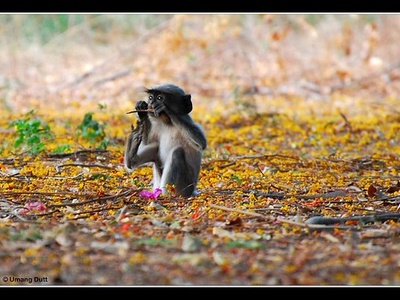
Gray Langur
A group of sacred monkeys from the Indian subcontinent, known for their silver-grey fur and black faces. They are highly adaptable, living in both forests and urban areas near temples.
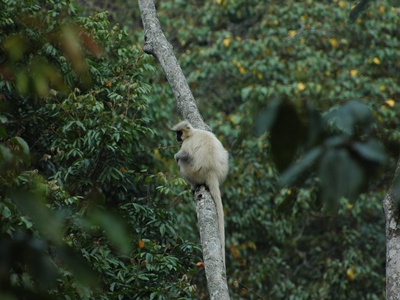
Golden Langur
An endangered primate found in a small region of western Assam, India, and Bhutan. It is famous for its beautiful cream to golden-colored fur, which changes with the seasons.

Spotted Linsang
A small, cat-like carnivore from Southeast Asia. It has a slender body with dark spots and a long, ringed tail. A secretive, nocturnal hunter, it preys on small vertebrates.
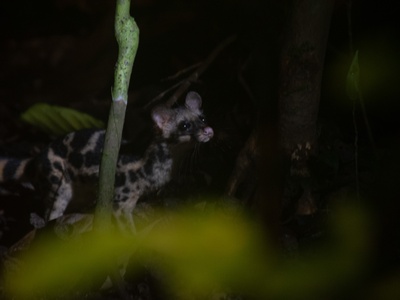
Banded Linsang
A sleek carnivore from Southeast Asia related to civets and genets. It has a striking coat with broad dark bands and a long, banded tail, living a secretive, arboreal life.
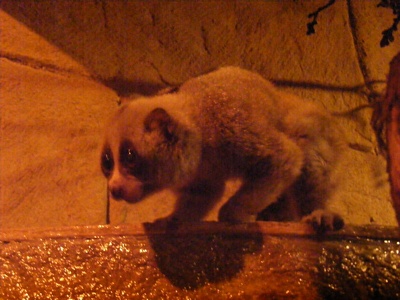
Pygmy Slow Loris
A small, nocturnal primate from Southeast Asia with large, round eyes. It moves slowly and deliberately and has a toxic bite, a rare trait among mammals, used for defense.

Bengal Slow Loris
The largest of the slow loris species, found in Southeast Asia. This nocturnal primate has a toxic bite and is threatened by the illegal pet trade and traditional medicine.
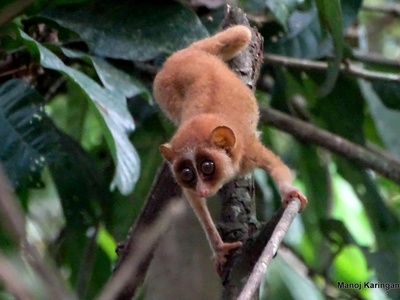
Gray Slender Loris
A small, nocturnal primate from southern India and Sri Lanka with long, spindly limbs and huge eyes. It forages for insects in the trees at night, moving with slow, careful precision.
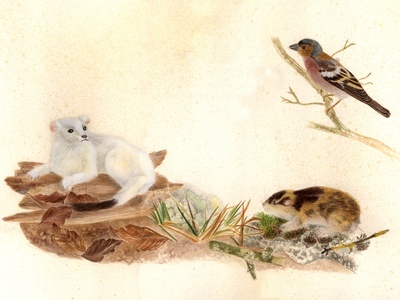
Norway Lemming
A small rodent of the Arctic tundra, famous for its dramatic population cycles. Contrary to myth, they do not commit mass suicide but may accidentally fall from cliffs during mass migrations.

Northern Bog Lemming
A small, secretive rodent from the boreal forests and tundra of North America. Unlike other lemmings, it does not experience dramatic population booms and is rarely seen.

Leopard Cat
A small wild cat from Asia, roughly the size of a domestic cat but with longer legs. It is named for its leopard-like spots and is the wild ancestor of the domestic Bengal cat breed.
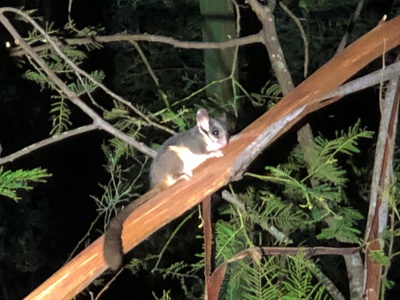
Leadbeater’s Possum
A critically endangered small, gliding possum from the mountain ash forests of Victoria, Australia. It is the state’s faunal emblem and is threatened by logging and wildfire.

Liberian Mongoose
One of the world’s rarest and most poorly known carnivores, found only in the forests of Liberia and Côte d’Ivoire. It has long claws for digging for insects and worms.
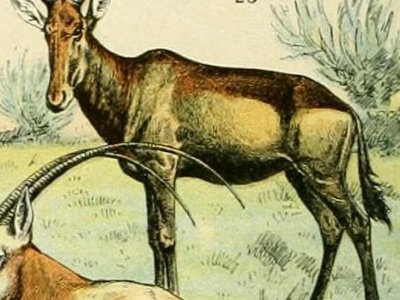
Lichtenstein’s Hartebeest
A large antelope from the savannas of southeastern Africa, known for its long face and oddly shaped horns. It is a grazer that lives in small herds.
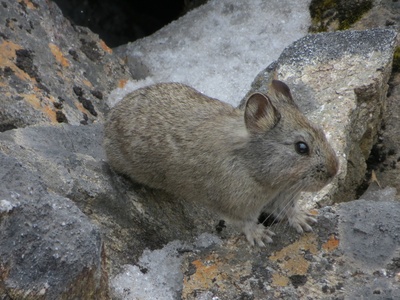
Large-eared Pika
A small, rabbit-like mammal from the high mountains of Central Asia. It lives in rock crevices and communicates with high-pitched calls, often “haymaking” by drying vegetation for winter food.

Long-tailed Weasel
A slender, adaptable carnivore found from southern Canada to northern South America. A relentless hunter of small rodents, it has a long body, short legs, and a black-tipped tail.
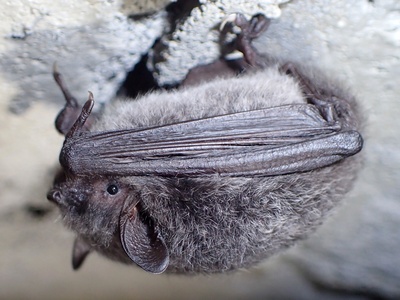
Large-footed Myotis
An Australian bat with unusually large feet, which it uses to rake insects and small fish from the surface of freshwater streams and lakes while in flight.
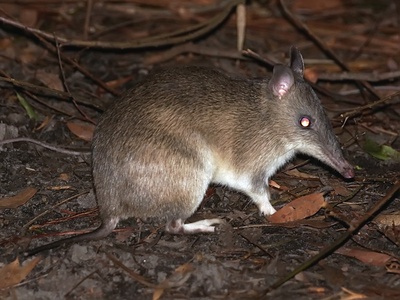
Long-nosed Bandicoot
A marsupial from eastern Australia with a long, pointed snout used to dig for insects and fungi in the soil. It is known for leaving conical-shaped holes in lawns and gardens.

Long-nosed Potoroo
A small, rat-like kangaroo relative from southeastern Australia. This nocturnal marsupial forages on the forest floor for fungi, playing a vital role in dispersing fungal spores.
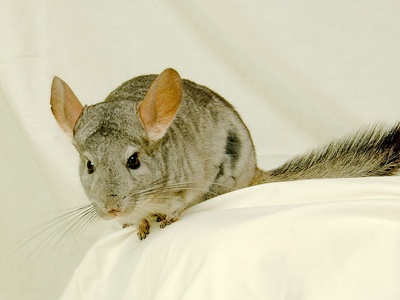
Long-tailed Chinchilla
A critically endangered rodent from the Andes of Chile, famed for its incredibly soft, dense fur. Wild populations have been decimated by hunting for the fur trade.
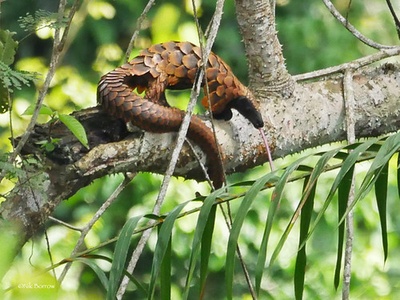
Long-tailed Pangolin
An African pangolin species with an extremely long, prehensile tail that contains more vertebrae than any other mammal. It is arboreal and uses its tail for climbing and balance.
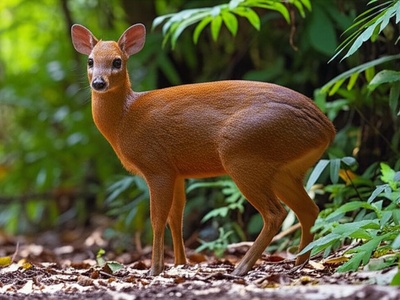
Lowland Red Brocket
A small, shy deer species found in the forests of South America. It is typically solitary with a reddish-brown coat that provides excellent camouflage on the forest floor.
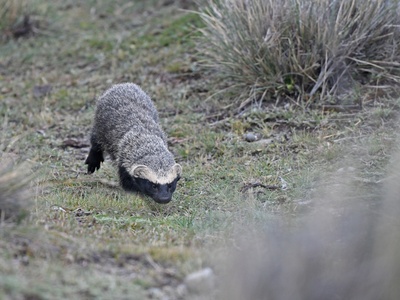
Lesser Grison
A weasel-like carnivore from South America. It has a stocky body, a frosted grey back, and a black face and underbelly. It is a fierce predator of small animals.
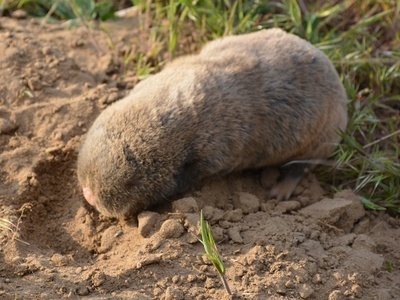
Lesser Mole-rat
A rodent adapted to a fully underground life in southeastern Europe and western Asia. It is blind, using its large incisors and head to dig extensive burrow systems.
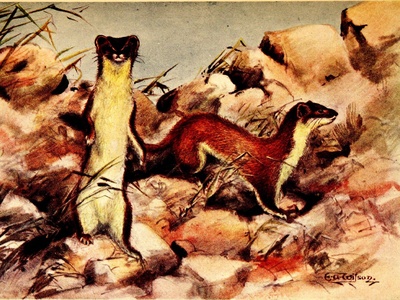
Lesser Shrew
One of the smallest mammals in Europe, weighing only a few grams. It has an incredibly high metabolism and must eat almost constantly to survive, preying on small insects and spiders.

Lesser Bamboo Lemur
A small lemur from Madagascar that specializes in eating bamboo, including the cyanide-containing shoots which it can safely metabolize. Its diet makes it a unique specialist.

Lowe’s Monkey
A guenon monkey found in the forests of Ivory Coast and Ghana. It has a colorful face with a distinctive black stripe across its brow and a yellowish beard.
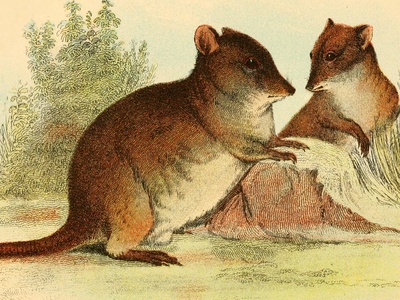
Long-haired Rat
An Australian native rodent known for massive population irruptions following heavy rains in arid regions. During these “rat plagues,” their numbers can swell into the millions.
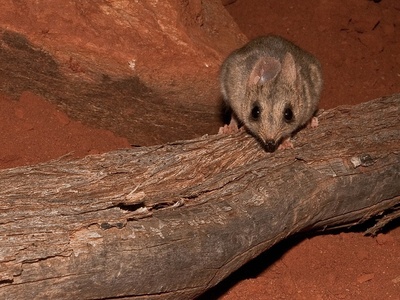
Long-tailed Dunnart
A small, mouse-like carnivorous marsupial from arid western Australia. Its tail is remarkably long, often twice the length of its body, which aids in balance when climbing.
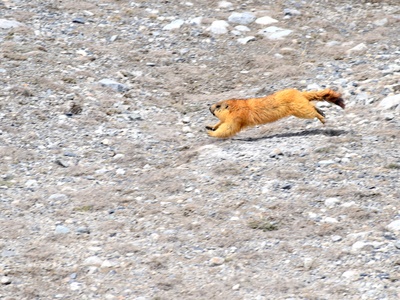
Long-tailed Marmot
A large ground squirrel from the high-altitude regions of central Asia. It lives in social colonies and hibernates for more than half the year in deep burrows to survive the harsh winters.
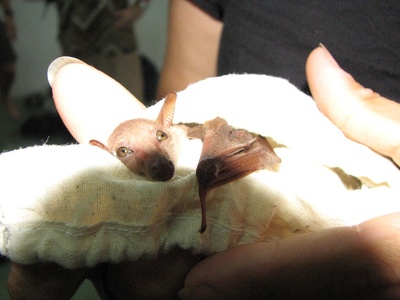
Long-tongued Nectar Bat
A small fruit bat from Southeast Asia and Australia with a very long tongue for feeding on nectar. It is an important pollinator for many night-blooming plants, including mangroves.
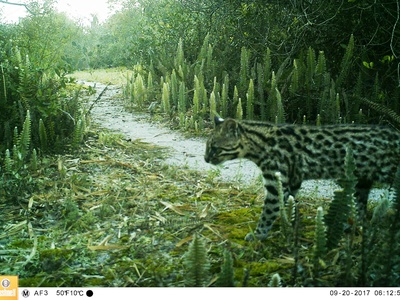
Leopardus guttulus
Commonly known as the Southern Tigrina or tiger cat, this small spotted cat is native to the Atlantic Forest in South America. It is a nocturnal hunter, preying on small mammals, birds, and lizards.

Leaf-chinned Bat
A medium-sized bat with unusual, elaborate leaf-like flaps on its chin. Found from the southern US to Peru, it roosts in large colonies in caves and forages for moths.
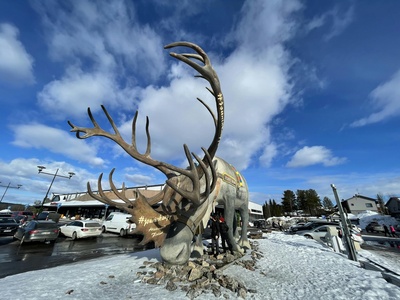
Lapland Reindeer
A subspecies of reindeer from the Eurasian tundra. Domesticated by the Sámi people for millennia, it is used for meat, milk, and transportation in the harsh arctic environment.

Lesser Capybara
A smaller relative of the well-known capybara, found in Panama, Colombia, and Venezuela. Like its larger cousin, it is semi-aquatic and lives in social groups near water.
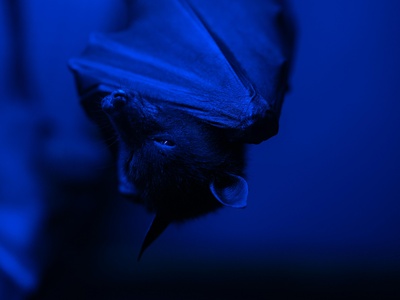
Lesser Dog-like Bat
A small insectivorous bat from Central and South America. It gets its name from its long, dog-like muzzle and is known to roost in small groups in well-lit areas like cave entrances.
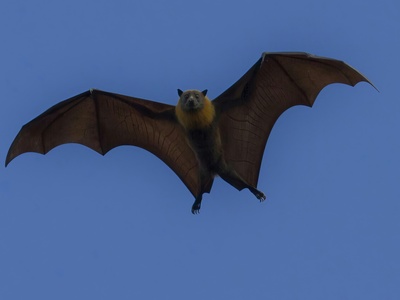
Lesser Yellow Bat
A rare bat from the islands of Réunion and Madagascar. It often roosts in buildings and is critically endangered, possibly even extinct on Réunion.

Lesser Woolly Horseshoe Bat
A species of horseshoe bat from India and Sri Lanka. It has a complex, leaf-shaped nose structure that it uses for echolocation while hunting insects in dense forests.

Lewis’s Marmot
A newly recognized species of marmot from the Rocky Mountains of Idaho, Montana, and Wyoming. It was previously considered part of the yellow-bellied marmot species complex.
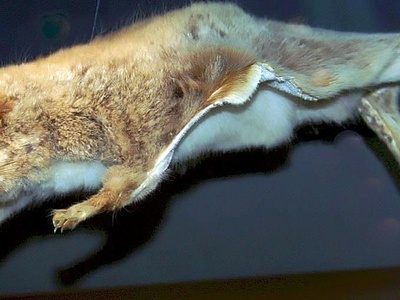
Lord Derby’s Anomalure
A large, nocturnal gliding rodent from the forests of Central and West Africa. It has a membrane between its limbs that allows it to glide for long distances between trees.
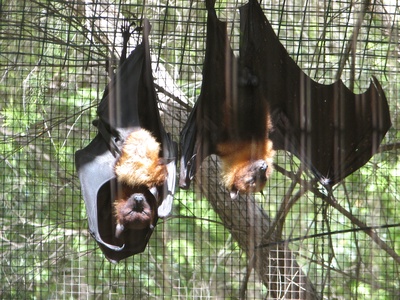
Lyle’s Flying Fox
A large fruit bat found in Southeast Asia. It forms large, noisy urban colonies, often in temples, and plays a key role as a pollinator and seed disperser, though it can come into conflict with fruit farmers.
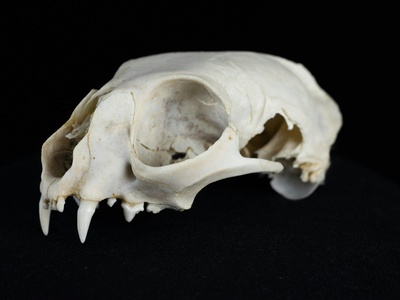
Luzon Broad-toothed Rat
A rare and poorly understood rodent known only from Luzon Island in the Philippines. It is believed to be arboreal and is notable for its unusually broad incisor teeth.
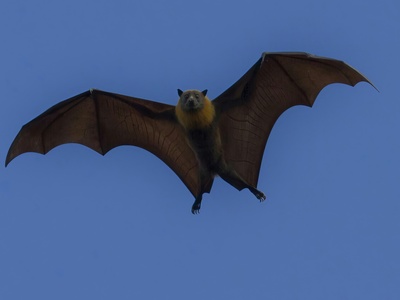
Lesser Ghost Bat
A small, white-furred insectivorous bat from the Amazon basin. It roosts under large leaves, often near streams, and its pale coloration provides camouflage.

Lesser Gymnure
A small, shrew-like mammal from Southeast Asia, also known as the lesser moonrat. It has coarse fur and forages on the forest floor for insects and other invertebrates.
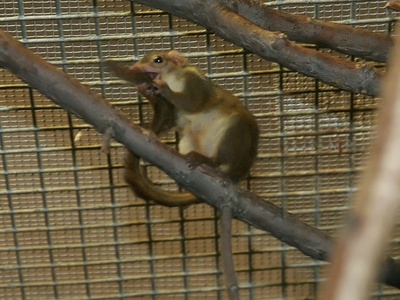
Lesser Treeshrew
A small mammal from Southeast Asia that, despite its name, is not a true shrew. It is a nimble, squirrel-like creature that forages for insects and fruit in the lower levels of the forest.

Large-eared Tenrec
A tiny, shrew-like mammal from Madagascar, one of the smallest of the tenrecs. It uses its large ears to listen for the movements of its insect prey in the leaf litter.

Large Forest Bat
A common species of bat from southeastern Australia. It is one of the few Australian bats that remains active during the cold winter months, roosting in tree hollows.
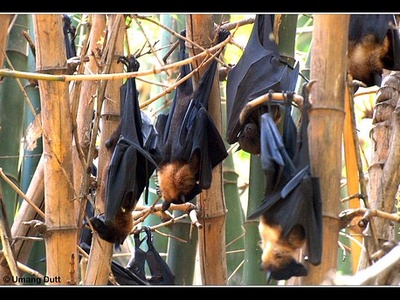
Large-eared Flying Fox
A species of fruit bat found in New Guinea and surrounding islands. It has prominent, long ears and forages at night for fruit and nectar, making it an important seed disperser.
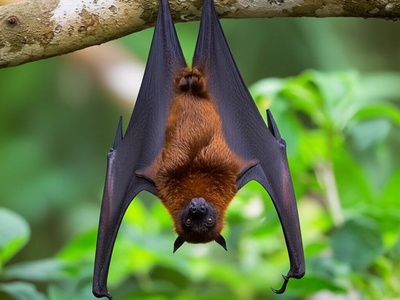
Lombock Flying Fox
A species of fruit bat endemic to the Lesser Sunda Islands of Indonesia. It roosts in large colonies and is threatened by hunting and habitat degradation.
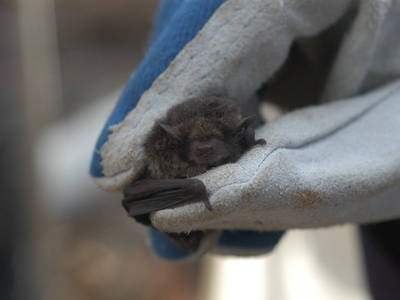
Little Forest Bat
One of Australia’s smallest mammals, this tiny bat weighs only 3-6 grams. It is highly adaptable, found in a wide range of habitats including urban parks and gardens.

Long-crested Pygmy Porcupine
An arboreal porcupine from South America with a prehensile tail used for gripping branches. It is covered in short, sharp quills and has a distinctive crest of long bristles on its head.

Long-eared Chipmunk
A species of chipmunk from the Sierra Nevada mountains of California and Nevada. It is distinguished by its relatively large ears and the four prominent white spots behind them.
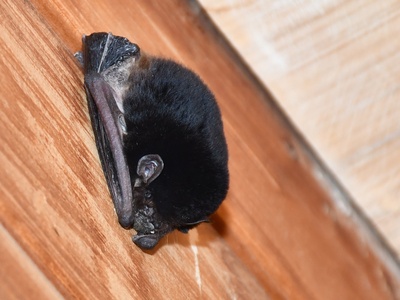
Little Pied Bat
A small bat from the arid inland regions of eastern Australia. It has distinctive black and white markings and is known for its fast, erratic flight as it hunts insects.

Long-glanded Mole-shrew
A shrew from the Himalayan region, adapted for a semi-fossorial life. It has very small eyes, no external ears, and a strong odor produced by glands on its flanks.
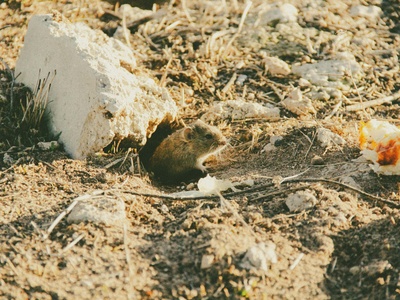
Long-tailed Vole
A vole species found in western North America, from Alaska to New Mexico. It lives in a variety of habitats, from alpine meadows to forests, and its tail is unusually long for a vole.
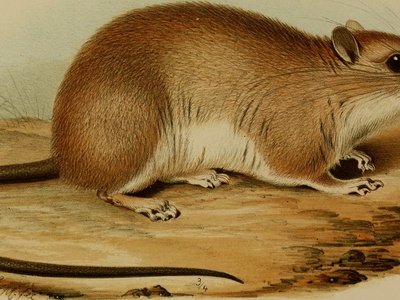
Lowland Brush Mouse
A species of rodent found on the Yucatán Peninsula in Mexico. It is a nocturnal, seed-eating mouse that lives in dry lowland forests and scrublands.
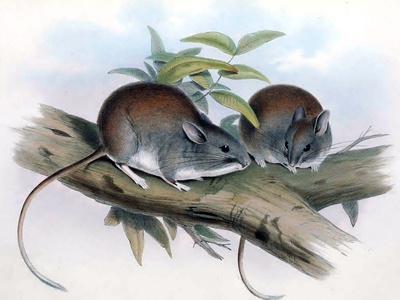
Lesser Stick-nest Rat
A possibly extinct Australian rodent that built large, communal nests out of sticks. The last confirmed sighting was in the 1930s, its decline caused by introduced predators.
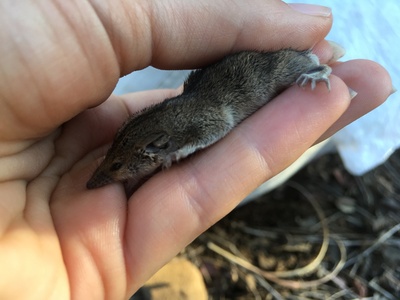
Long-tailed Planigale
One of the world’s smallest marsupials, this tiny predator from northern Australia hunts insects and small lizards in the cracks of drying floodplain soils.

Lesser Bilby
An extinct marsupial from the deserts of central Australia. This small, burrowing bandicoot had silky fur and large ears. It was last seen in the 1930s.
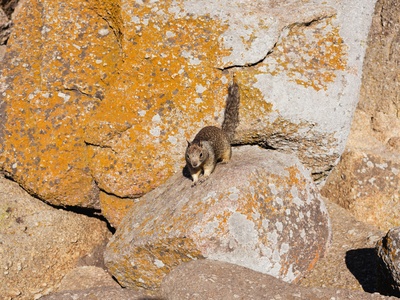
Large Rock Rat
A native Australian rodent found in the rocky escarpments of the Kimberley and Arnhem Land. It shelters in deep rock crevices during the day to escape the extreme heat.
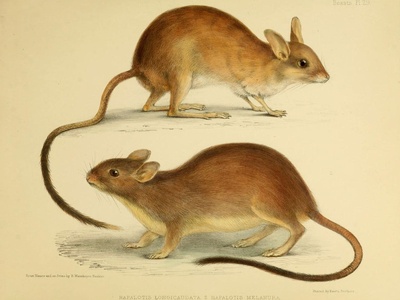
Long-tailed hopping mouse
An extinct species of hopping mouse from the arid interior of Australia. Known for its bipedal hop and extremely long tail, it was last recorded in 1901.
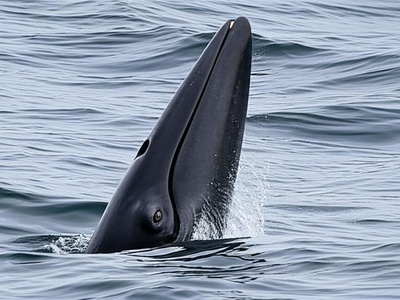
Liverpool Bay/Halifax Bay Thing
An undescribed, possibly extinct, species of rorqual whale from Australia. Known only from a few stranding events, its taxonomic status remains a mystery.


